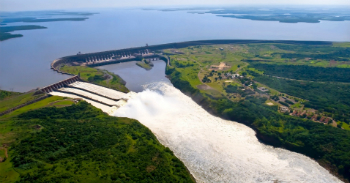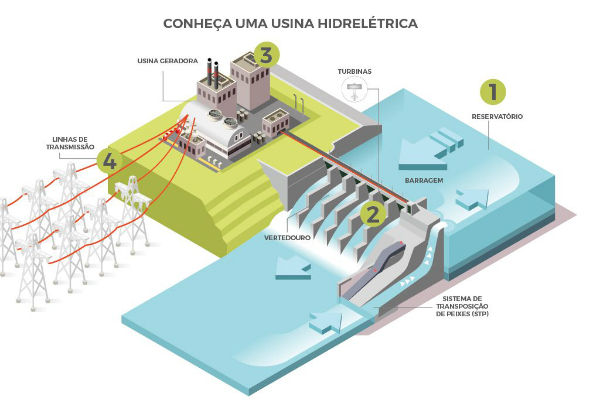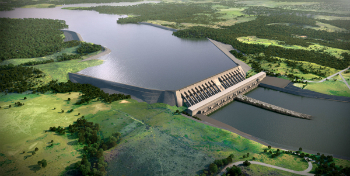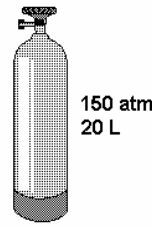One Hydroelectric Power Plant, also called Hydroelectric Power Plant or Hydroelectric Power Plant, it is an engineering work that uses the power of water to generate energy.

Itaipu hydroelectric plant, largest hydroelectric plant in the Americas
In reality, it is an intricate engineering project (civil, electrical, mechanical, hydraulic, etc.) that demands enormous construction efforts.
That's because these plants need major works and equipment so that they can produce electricity by taking advantage of the latent hydraulic potential in a river.
As this is a very complex work that involves several calculations, the technical feasibility of each plant must be evaluated in a particular way.
Therefore, it is an installation connected to the transport network that distributes an amount of energy requested by the loads.
Note also that the use of hydraulic energy is quite old and was first used in waterfalls and produces mechanical energy in mills since the 1st century BC. Ç.
How does a hydroelectric plant work?

Operating scheme of a hydroelectric plant
- The gravitational potential energy that converts to kinetic energy is obtained by the damming of water;
- This damming causes pressure that converts hydraulic energy into mechanical energy;
- This mechanical energy is transferred to the hydraulic turbine that will be converted into electrical energy;
- The electric energy produced is transmitted to one or more transmission lines, interconnected to the distribution network;
- However, some of this energy is "lost" in the form of heat that heats the transmission line.
Understand more about the Hydro-electric energy.
Advantages and Disadvantages of Hydroelectric Power Plants
Despite being a renewable energy source, does not mean they are environmentally immaculate.
Some environmental impacts harm the fauna and flora of the flooded area that constitutes the reservoir.
The flooding of the floodplains, the increase in the level of the rivers and the local temperature stand out.
On the other hand, the main positive aspect is the cheaper energy production in relation to the costs of electricity production via nuclear energy.
It is certainly less environmentally aggressive than oil or coal-based thermoelectric plants.
Read too:
- Thermoelectric power plant
- Nuclear plant
- Types of Energy
- Thermal energy
- electromagnetic induction
Hydroelectric Power Plants in Brazil

Belo Monte Plant in the Xingu River Basin
Brazil is the third largest producer in the world in hydroelectric potential, after Canada and the United States. Furthermore, it is the third country with the greatest hydraulic potential, behind Russia and China.
About 90% of the electricity generated in the country comes from hydroelectric plants. There are just over 100 plants of this type throughout Brazil, of which the following stand out:
- Itaipu Binacional Hydroelectric Power Plant: located on the Paraná River, comprising part of the state of Paraná and part of Paraguay.
- Belo Monte Hydroelectric Power Plant: located on the Xingu River, state of Pará.
- Tucuruí Hydroelectric Power Plant: located on the Tocantins River, state of Pará.
- Jirau Hydroelectric Power Plant: located on the Madeira River, state of Rondônia.
- Santo Antônio Hydroelectric Power Plant: located on the Madeira River, state of Rondônia.
Curiosities
- The largest hydroelectric power plant in the world is the Three Gorges Plant, located in China.
- THE American Society of Civil Engineers (ASCE) considered the Itaipu Power Plant one of the "Seven Wonders of the Modern World". It is the second largest hydroelectric plant in the world and produces 20% of the national demand and 95% of the Paraguayan demand for electricity.
- About 20% of the electricity produced worldwide comes from hydroelectric power plants.


